ASUS P8Z68-V PRO Review: Our First Z68 Motherboard
by Ian Cutress on May 11, 2011 3:13 AM EST- Posted in
- Motherboards
- Asus
- Z68
ASUS P8Z68-V PRO: UEFI
The ASUS UEFI hasn't changed much since we reviewed the P8P67 PRO, of big help to me is the addition of a screenshot button which saves a BMP of the current screen to USB stick. I found out that you can't save it to an NTFS USB stick—it has to be a FAT based file system.
One big departure from other motherboard manufacturers is that by default, ASUS have AHCI mode enabled for the SATA ports, which helps take advantage of AHCI capable SATA drives. Most motherboards default this to IDE for backwards compatibility, but most users do not check the BIOS for IDE/AHCI mode, and thus could be losing valuable performance (15-20% in sequential) if not enabled. Interestingly, ASUS note this in their manual and suggest that Windows XP users currently in IDE mode download a driver and install via floppy disk—despite this motherboard not having a Floppy port available...
The main screen is the ASUS EZ mode. This is the one screen that puts ASUS ahead of the field in terms of UEFI development—on this one screen, I can see my CPU, the BIOS version, temperatures, fan speeds and the boot priority. If I did not want to venture further into the UEFI, I also have handy options for lower power or high performance modes at the click of a button.
First step into the main BIOS utility gives a lesser amount of similar information, typical of any first screen for a non-graphical BIOS.
The main set of overclocking options here haven't changed from the P8P67 PRO, apart from the inclusion of the iGPU overclock settings when the iGPU is in use. If only the dGPU is in use, the iGPU settings do not show up here. The main screen of interest in the UEFI is the System Agent Configuration:
This is how we select/deselect Virtu. To enable Virtu, the iGPU Multi-Monitor option must be set to 'Enabled'. For d-Mode, the 'Initiate Graphics Adapter' should be in the PCIe/PCI option, and the monitor connected to a dGPU. For i-Mode, change the option to 'iGPU', and on reboot connect the monitor to the integrated graphics connectors on the IO Panel.
As always with motherboards using the Marvell SATA 6Gbps controller, if you're not using it, save some boot time by disabling it in the BIOS.
ASUS P8Z68-V PRO: Overclocking
As we have the option of CPU and iGPU overclocking, I'll go through my process of doing each one individually. Combining both overclocks is a grey area, as increasing the overclock for one could decrease the overclock for the other. For the most part, people using a dGPU will overclock the CPU, and those using the iGPU may want the iGPU overclocked instead.
CPU Overclock
As the ASUS system has its OC Tuner, I gave that a spin first. It has two modes—Fast and Extreme. Fast looks for the best overclock at boot time with coarsely grained values—on this board it gave a 42x multiplier and 103.5 BCLK for a 4347 MHz overclocked speed. This is better than what we got on the MSI P67A-GD65 at the touch of a button. The Extreme mode initiates the fast mode first, then in the OS attempts to increase the multiplier and the BCLK by stress testing each option until it fails. Unfortunately, it could not increase either before giving the blue screen of death, giving another overclock of 4347 MHz.
With this in mind, I jumped into the TurboV section of the AI Suite II software, and started adjusting some sliders. I upped the voltage to 1.42 V (my self-imposed safe OC limit for these reviews on a Corsair H50-1), reduced the BCLK to 100.0 and set the multiplier at 48x. The OS didn't crash, so I slowly increase the multiplier to 50x which successfully ran the multi-threaded 3D Movement benchmark, but gave load voltage readings of 1.544 V. On upping the multiplier to 51x, the OS crashed and rebooted.
On entering the BIOS after this, I noticed it was set at 42x and 103.5 MHz, meaning that the TurboV software did not apply my overclock in the BIOS. I adjusted the overclock to 46x and 100MHz and the OS booted and was stable, and it was at 47x as well, but 48x crashed and rebooted. Back at 47x, I achieved a 101.1 MHz BCLK (4750 MHz overall), which gave a multi-threaded 3D Movement result of 483.61. Above 101.1 BCLK resulted in a crash to reboot.
I decided to reduce the multiplier to 46x and see if we could increase the BCLK to match the overall frequency. 103.5 MHz was the best stable BCLK, giving an overall overclock of 4764 MHz.
For the 4764 MHz OC results using the 3D Movement benchmark, in single threaded mode, for a 28.8% OC (from 3700 MHz to 4764 MHz), a 30.1% increase in the score was observed (112.95 to 146.90) In multi threaded mode, for a 40.1% OC (from 3300 MHz to 4764 MHz), a 39.4% increase in the score was observed (347.68 to 484.81).
iGPU Overclock
Going back to a stock CPU frequency, I applied the OC Tuner to the iGPU, and it came back with 1450 MHz. The integrated graphics on this processor have seen 1800 MHz, so I used TurboV to increase the frequency.
TurboV allows a frequency change and an iGPU voltage offset. I upped the speed to 1700 MHz, and the system required a reboot to apply the new frequency. The TurboV came back with an automatic voltage offset of +150 mV, and the board successfully ran the Metro 2033 benchmark at 21.00 frames per second. The iGPU speed was only able to be increased in steps of 50 MHz, and the following results were observed:
- 1700 MHz, +150 mV offset, 21.00 FPS
- 1800 MHz, +250 mV offset, 22.21 FPS
- 1900 MHz, +250 mV offset, 22.81 FPS
- 2000 MHz, +250 mV offset, 22.62 FPS
- 2100 MHz, fail
Similar to what we saw on some of the H67 boards, after a certain iGPU speed, no actual improvement occurs in terms of performance. I had attributed this to some form of throttling, but after disabling that feature in the BIOS, statistically similar results were obtained. Thus for the benchmarks, I settled on a 1900 MHz overclock, which is technically the best iGPU overclock for a motherboard we've seen on this chip. This could be down to the power delivery—as Z68 has to cater for both CPU and GPU overclock, a better power delivery system is in place.


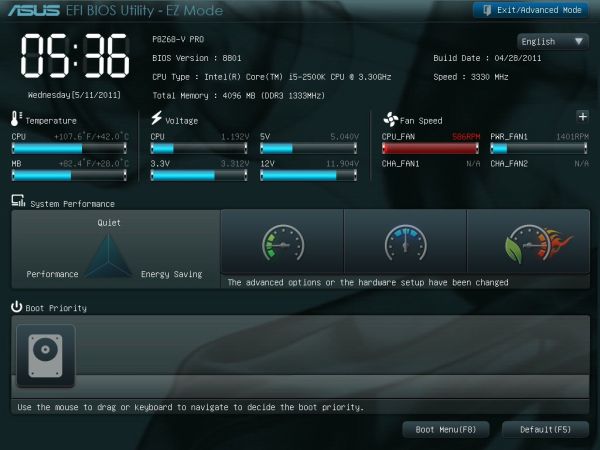
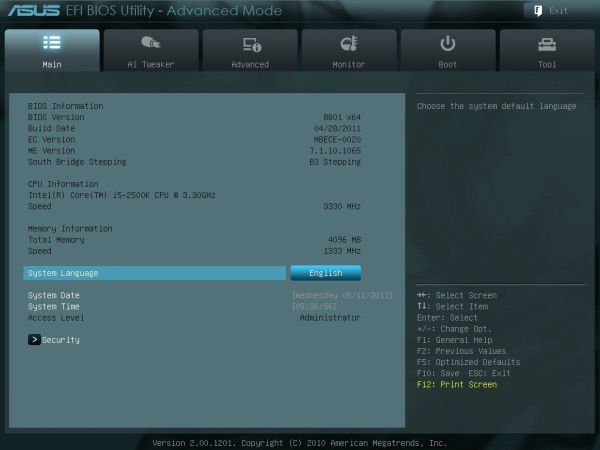
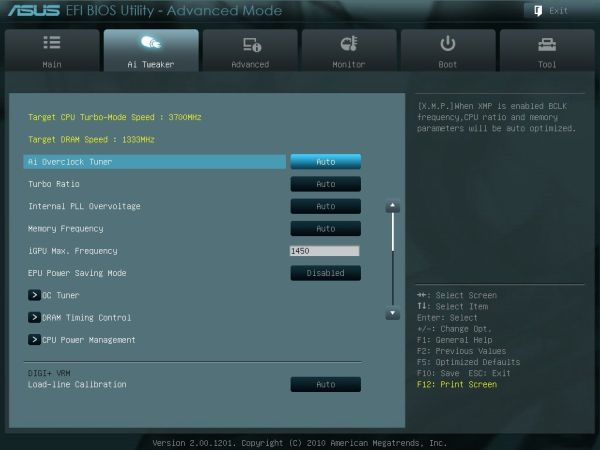
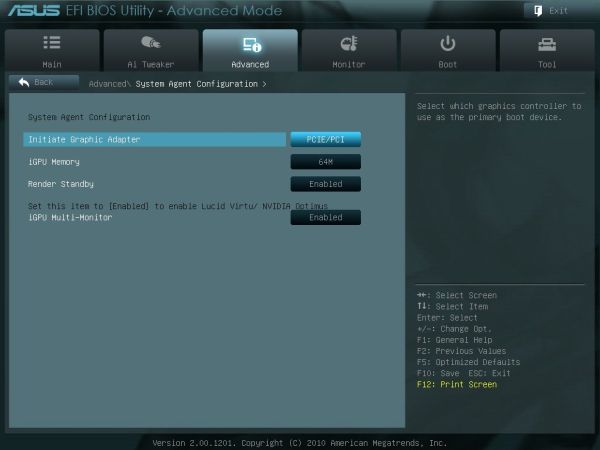
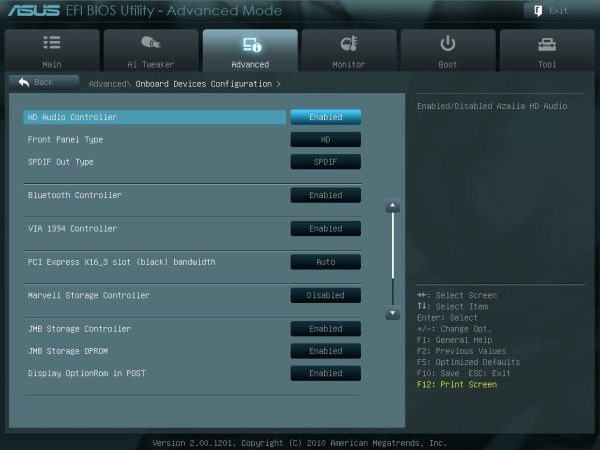














95 Comments
View All Comments
L. - Thursday, May 12, 2011 - link
IGP Intel = Ouch.I believe that if you need multiple displays you'll be far better off waiting for amd llano or the next gen of intel fail-gpu.
sylar365 - Wednesday, May 11, 2011 - link
Right now I am using an Asrock P67 Extreme 4, i5-2500k, OCZ Vertex 2 64GB with Windows and a couple frequently used apps and a WD 640GB Black SATA 2 for bulk storage. I only use one graphics card in the form of a GTX 560 ti and I appreciate it's performance but am in love with it's power usage. As far as I can tell it seems like upgrading to the Z68 platform would not provide much gain in gaming FPS, SSD longevity or overclocking ability. Those issues aside would I see ANY decrease in my monthly electric bill after partially using my CPU's on chip GPU? Even while assuming that I have some disposable income it still seems that jumping from P67 to Z68 would be like throwing money into the wind unless I plan on ... nope, nevermind ... even adding a second 560 ti would be faster on my current board. As far as investments go (for me anyway) making it rain at the local strip club is looking to be a more responsible path than upgrading to Z68.AnnihilatorX - Wednesday, May 11, 2011 - link
Or if you are like me who hold out onto my B2 P67 until it died 2 weeks ago and get a refund and buy Z68 :PSunsmasher - Wednesday, May 11, 2011 - link
Upgrade doesn't make sense for you because you apparently don't do much transcoding....L. - Thursday, May 12, 2011 - link
Like most people ;)Otherwise, this motherboard looks like a piece of trash for 210 bucks, very limited pciE, etc.. who would want it.
There is a fair chance you will see Z68 boards that are much more convincing.
Tylanner - Wednesday, May 11, 2011 - link
Man would I be upset if I held out for Z68 all these months.I was expecting an improvement in Multi-GPU Scaling(2-way Sli)
AnnihilatorX - Wednesday, May 11, 2011 - link
No. Z68 is still limited by number of PCI-E. The main reason is CPU really. You'd have to go for Z79 and Sandybridge-E for higher PCI-e lanes count.AnnihilatorX - Wednesday, May 11, 2011 - link
Actually disregard me, bandwidth should be sufficient for 2-way SLIrbusch - Wednesday, May 11, 2011 - link
On page two if the review it says...."here are a couple of negative points however - the iGPU frequency requires a reboot after every selection, and the changes you do make to the CPU frequency aren't written to BIOS (and thus aren't permanent) nor are they initialised on reboot, requiring a manual adjust on every boot."
Does this (the CPU bit) differ from the P8P67 PRO board? Am I understanding correctly that any CPU overclock done in windows (as opposed to UEFI) disappears every single time the machine is rebooted?
rbusch - Wednesday, May 11, 2011 - link
And forgive me if this is a obvious and stupid question but at (nearly) the same price point, would there be any advantages of choosing the P8P67 Pro over the P8Z68-V PRO?Thanks